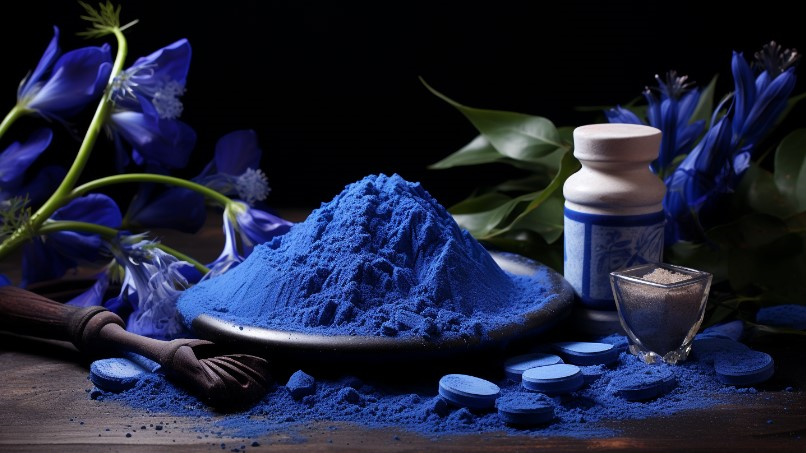どちらも青色顔料だが、なぜフィコシアニンを選ぶのか?

As one of the three primary colors in nature, blue is the main force in blending various hues. However, natural blue pigments are rare in nature. It is not easy to find a safe and reliable natural blue raw material that can be used in the food industry.
The blue pigments currently allowed to be used in the “National Food Safety Standards” include brilliant blue, algae blue, gardenia blue, etc. However, due to the unsightly color of gardenia blue, it is rarely used; while algal blue has average stability and is easily affected by temperature, acidity and alkalinity, so the domestic market is still dominated by bright blue. However, in recent years, with the improvement of extraction technology, the use of algae cyanide has increased dramatically.
Brilliant blue is a synthetic pigment, a water-soluble non-azo colorant, which is produced by the condensation and oxidation of benzaldehyde orthosulfonic acid and N-ethyl-N-(3-sulfobenzyl)-aniline. . Common ones include blue drinks, ice cream pudding, facial masks, etc. launched by well-known beverage companies. Long-term and excessive intake may have adverse effects on the body. According to testing, the human body’s daily allowable intake is 0-12.5mg/kg. Excessive consumption may cause allergies, indigestion, lack of concentration, cancer and other risks.
フィコシアニン is a natural pigment, a dark blue powder extracted and refined from spirulina. Algae blue is easily soluble in water, has high purity and is insoluble in grease. It is mainly used as a colorant in food, pharmaceuticals, cosmetics and other industries. Common products include Zhong Xuegao’s “Lazy Addiction”, Japanese “Maruta”‘s blue tonkotsu ramen, and Mars European Skittles.
In China, most food industries will choose bright blue because of its low cost, strong tinting power and good stability. Although the amount added is not large, consuming it over time will still have adverse effects on the body. In Europe and the United States, the only natural blue pigment that is allowed to be added to food and used without limit is フィコシアニン. For China, phycocyanin is a relatively new food raw material colorant, so phycocyanin is more recognized in Europe and the United States than in China.
However, as people pay more attention to food safety, checking the ingredient list has become a habit, and consumers are gradually beginning to look for products that do not contain artificial and synthetic ingredients. Sensient’s 2023 study “shows that ‘no artificial flavors or colors’ claims guide consumers and influence purchasing decisions. Nearly two-thirds of shoppers said they would be more interested in a product if its promotion shifted from artificial to natural colors. It is possible to buy this product.” This forces companies to choose more natural and healthier phycocyanin as food colorants.
() ()